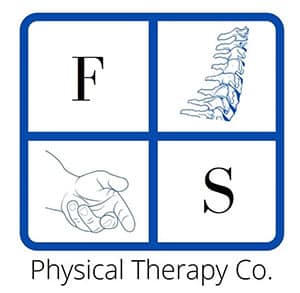Understanding Neck & Shoulder Pain
Neck and shoulder pain are some of the most common musculoskeletal issues, affecting people of all ages and lifestyles. Whether caused by poor posture, repetitive movements, stress, or injury, neck and shoulder pain can lead to stiffness, reduced mobility, and chronic discomfort. If left untreated, these issues can worsen over time and even contribute to headaches and nerve compression.
Physical therapy offers an effective, non-invasive approach to relieving neck and shoulder pain by addressing the root cause of the discomfort, improving mobility, and preventing future issues.
Common Causes of Neck & Shoulder Pain
Neck and shoulder pain can develop due to several factors, including:
- Poor Posture – Spending long hours at a desk, looking down at a phone, or slouching while sitting can place excessive strain on the neck and shoulders.
- Muscle Strains & Sprains – Overuse, sudden movements, or carrying heavy loads can result in muscle tightness and discomfort.
- Herniated Discs – When a spinal disc in the neck bulges or ruptures, it can press on nerves and cause pain in the neck, shoulders, and arms.
- Rotator Cuff Injuries – Damage to the shoulder’s rotator cuff muscles or tendons can lead to pain, weakness, and restricted movement.
- Whiplash – A sudden jolt to the neck, often due to car accidents or falls, can cause inflammation, stiffness, and reduced mobility.
- Nerve Compression (Pinched Nerve) – A compressed nerve in the cervical spine can result in pain that radiates to the shoulders, arms, and even hands.
- Frozen Shoulder (Adhesive Capsulitis) – A condition that causes stiffness and pain in the shoulder joint, making movement difficult.
- Arthritis – Osteoarthritis and rheumatoid arthritis can lead to joint pain, stiffness, and inflammation in the neck and shoulders.
- Stress & Tension – Emotional and physical stress can lead to tightness in the upper back, neck, and shoulders, causing discomfort and headaches.
Symptoms of Neck & Shoulder Pain
The symptoms of neck and shoulder pain can range from mild to severe, and they may include:
- Persistent stiffness or soreness in the neck and shoulders
- Sharp or shooting pain in the upper back or down the arms
- Limited range of motion or difficulty turning the head
- Tingling or numbness in the arms, hands, or fingers
- Muscle tightness or spasms
- Headaches, often originating from the neck
- Clicking or grinding sensations when moving the neck or shoulders
If you experience any of these symptoms for an extended period or if the pain worsens, it is important to seek professional treatment.
How Physical Therapy Can Help
Physical therapy is a safe and effective way to treat neck and shoulder pain. A tailored rehabilitation plan can relieve pain, restore mobility, and prevent re-injury.
1. Pain Management Techniques
- Manual Therapy: Hands-on techniques, such as massage, joint mobilization, and myofascial release, can help reduce muscle tension and improve flexibility.
- Cold & Heat Therapy: Ice helps reduce inflammation, while heat relaxes tight muscles and improves circulation.
- Electrical Stimulation (TENS): A mild electrical current is used to reduce pain and improve muscle activation.
- Dry Needling: A technique used to release trigger points and reduce muscle tightness.
2. Strengthening & Stability Exercises
- Neck Strengthening: Targeted exercises help improve the stability of the cervical spine.
- Rotator Cuff Strengthening: Strengthening the muscles that support the shoulder joint enhances stability and function.
- Scapular Stability Drills: Strengthening the muscles around the shoulder blades helps with posture and movement.
- Core Strengthening: A strong core provides better support for the neck and shoulders.
3. Stretching & Mobility Training
- Neck & Shoulder Stretching: Gentle stretching reduces stiffness and increases flexibility.
- Thoracic Spine Mobility Exercises: Improving movement in the upper back helps relieve strain on the neck and shoulders.
- Postural Re-Education: Learning proper posture reduces strain on the neck and shoulders.
- Foam Rolling & Self-Massage Techniques: Help relieve tension in tight muscles.
4. Posture & Ergonomic Education
- Desk & Workplace Adjustments: Proper monitor height, chair positioning, and ergonomic setups prevent strain.
- Correct Sleeping Positions: Sleeping with proper neck support can help reduce pain and stiffness.
- Gait & Movement Analysis: Correcting posture and movement patterns reduces long-term strain.
- Daily Activity Modifications: Learning how to lift, carry, and perform repetitive motions safely can prevent further pain.
5. Injury Prevention Strategies
- Warm-ups & Cool-downs: Preparing muscles before activity helps prevent strain.
- Load Management: Avoiding excessive strain by balancing activity and rest.
- Cross-Training: Incorporating other forms of exercise to reduce repetitive stress injuries.
- Shoulder Bracing or Taping: Providing additional support during recovery.
When to Seek Professional Help
You should consult a physical therapist if you experience:
- Neck or shoulder pain lasting more than two weeks
- Pain radiating down the arms or causing numbness/tingling
- Severe stiffness or loss of motion
- Weakness in the neck, shoulders, or arms
- Pain that worsens with movement or certain activities
Success Stories: How Physical Therapy Has Helped Others
At Fray & Stafford Physical Therapy, we have helped many patients recover from neck and shoulder pain.
One patient, a 40-year-old office worker, struggled with chronic neck pain from poor posture. Through targeted strengthening and ergonomic adjustments, he significantly reduced discomfort and improved productivity.
Another patient, a 28-year-old swimmer, suffered from rotator cuff irritation. With a customized rehabilitation program, including mobility work and strengthening exercises, she was able to return to competition pain-free.
A retired teacher with severe arthritis in the neck saw significant improvements in mobility and pain reduction after a structured therapy program focused on manual therapy and stability training.
Conclusion
Neck and shoulder pain can interfere with daily life, but physical therapy offers a non-invasive, highly effective solution for relief. Addressing the root cause through a structured rehabilitation program can help restore function and prevent future pain.
If you’re struggling with neck and shoulder pain, don’t wait for it to get worse. Contact Fray & Stafford Physical Therapy today to schedule a consultation. Our expert therapists will create a personalized treatment plan to help you regain mobility and live pain-free. Call us now at 321-567-3081 or book your free visit online!
Want more free advice?
Lower Back Pain Titusville, Florida – Fray & Stafford Physical Therapy Co.


